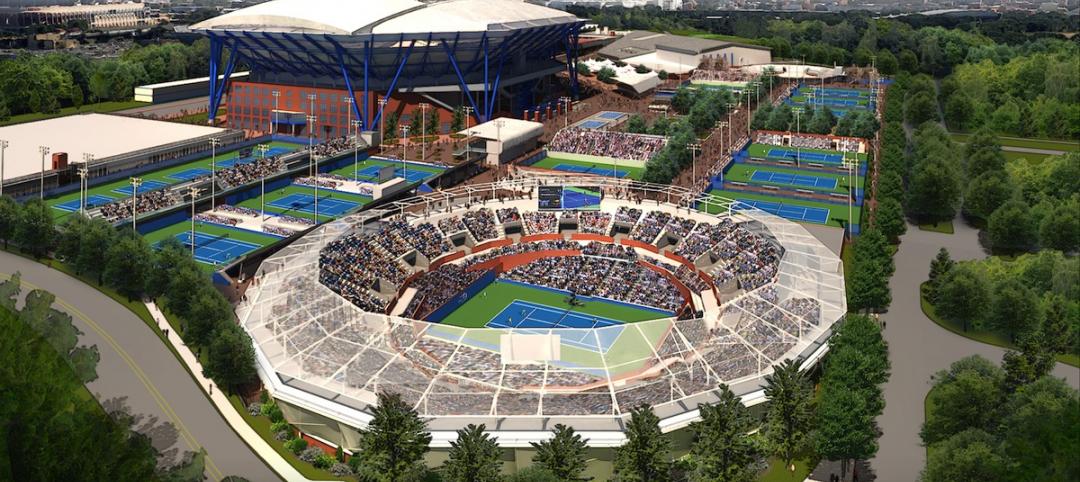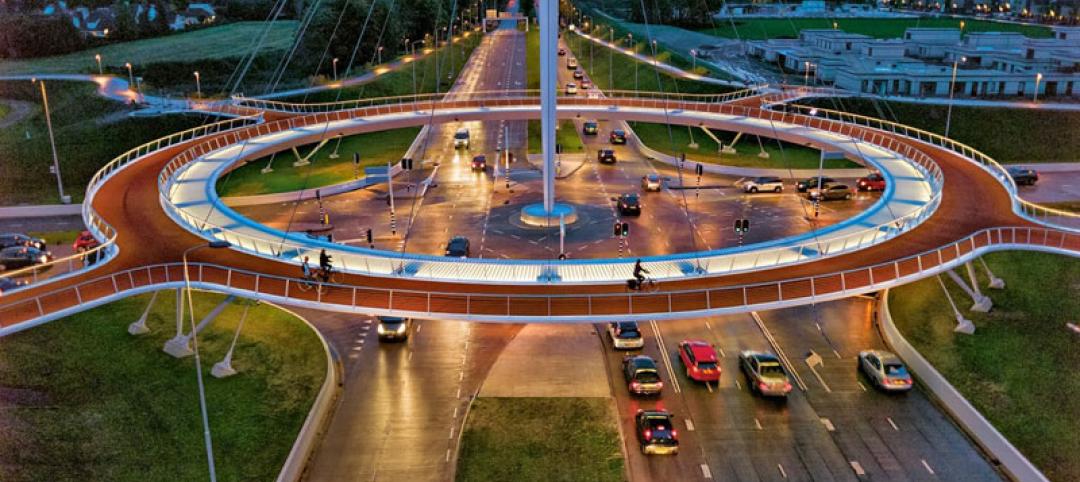For years the Oakland Athletics have been right at the top of the list of teams that desperately need a new ballpark. The Oakland Coliseum has caused the A’s a host of major league problems, chief among them recurring plumbing issues that have led to the clubhouses and dugouts flooding with sewage on numerous occasions.
Today, the team took another step closer to abandoning the problem child that is the Oakland Coliseum and announced it has hired four architecture firms to lead the design process of a new, problem-free home ballpark. Sasaki, Snøhetta, and Studio T-Square will lead the master planning and urban design efforts for the new stadium while HOK and Snøhetta will collaborate on the design.
Additionally, Sasaki, Snøhetta, and Studio T-Square will assist the A’s in a community engagement process. “A key component to making this project a success will be an active and meaningful engagement with A’s fans as well as with the broad and incredibly diverse community of Oakland,” says James Miner, AICP, Sasaki Principal, in a release. “We want the ballpark to be a great place not only for baseball, but also for the community and the environment.” There are no renderings yet, but Miner sees the new stadium as just one piece of the puzzle that will become an “urban ballpark district.”
Brad Schrock, AIA, regional leader of Sports + Recreation +Entertainment at HOK says, “We’re looking forward to collaborating with the A’s and our design partners to create an imaginative, amenity-rich, and enduring community asset.”
Currently, the stadium is being planned for a piece of land that sits next to Lake Merritt near Downtown Oakland. The area is surrounded by parkland and neighborhoods, a stark contrast to the sea of asphalt the Oakland Coliseum exists in. Estimates project the new stadium to seat 35,000 fans and cost approximately $500 million.
Update (12/06/17)
The A's just can't catch a break when it comes to getting a new ballpark. The board of trustees of Peralta Community College District, which owns the site near Laney College the new stadium was being designed for, voted to halt ongoing discussions with the A's.
"We are shocked by Peralta’s decision to not move forward," the A's said in a statement. "All we wanted to do was enter into a conversation about how to make this work for all of Oakland, Laney, & the Peralta Community College District. We are disappointed that we will not have that opportunity."
The next step for the team, if they are unable to rekindle discussions with the Peralta Community College District, is to reexamine other possibilities for a new stadium. The board's decision came as a surprise to the team, however, so a backup plan may not even exist.
Libby Schaaf, Oakland's mayor, remains optimistic about the A's future in the city and the team's ability to build a new ballpark. "Oakland remains fiercely determined to keep the Athletics in Oakland," Schaaf wrote in a statement on Twitter. "It is unfortunate the discussion with Peralta ended so abruptly, yet we're committed, more than ever, to working with the A’s and our community to find the right spot in Oakland for a privately-financed ballpark."
This latest setback comes less than one month after a design team of Sasaki, Snøhetta, Studio T-Square, and HOK were selected to design the new stadium.
Related Stories
| Apr 2, 2014
8 tips for avoiding thermal bridges in window applications
Aligning thermal breaks and applying air barriers are among the top design and installation tricks recommended by building enclosure experts.
| Mar 26, 2014
Callison launches sustainable design tool with 84 proven strategies
Hybrid ventilation, nighttime cooling, and fuel cell technology are among the dozens of sustainable design techniques profiled by Callison on its new website, Matrix.Callison.com.
| Mar 25, 2014
Sydney breaks ground on its version of the High Line elevated park [slideshow]
The 500-meter-long park will feature bike paths, study pods, and outdoor workspaces.
| Mar 20, 2014
Common EIFS failures, and how to prevent them
Poor workmanship, impact damage, building movement, and incompatible or unsound substrate are among the major culprits of EIFS problems.
| Mar 13, 2014
Do you really 'always turn right'?
The first visitor center we designed was the Ernest F. Coe Visitor Center for the Everglades National Park in 1993. I remember it well for a variety of reasons, not the least of which was the ongoing dialogue we had with our retail consultant. He insisted that the gift shop be located on the right as one exited the visitor center because people “always turn right.”
| Mar 12, 2014
14 new ideas for doors and door hardware
From a high-tech classroom lockdown system to an impact-resistant wide-stile door line, BD+C editors present a collection of door and door hardware innovations.
| Feb 26, 2014
Billie Jean King National Tennis Center serving up three-phase expansion
The project includes the construction of two new stadiums and a retractable roof over the existing Arthur Ashe Stadium.
| Feb 14, 2014
First look: Kentucky's Rupp Arena to get re-clad as part of $310M makeover
Rupp Arena will get a 40-foot high glass façade and a new concourse, but will retain many of its iconic design elements.
| Feb 14, 2014
Crowdsourced Placemaking: How people will help shape architecture
The rise of mobile devices and social media, coupled with the use of advanced survey tools and interactive mapping apps, has created a powerful conduit through which Building Teams can capture real-time data on the public. For the first time, the masses can have a real say in how the built environment around them is formed—that is, if Building Teams are willing to listen.
| Feb 11, 2014
World's first suspended bicycle roundabout [slideshow]
Located in the Netherlands, the project was designed to promote a healthier lifestyle.

















